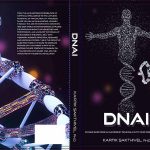- عنوان کتاب: Science_26_01_2024
- نویسنده: science
- حوزه: معلومات عمومی
- سال انتشار: 2024
- تعداد صفحه: 132
- زبان اصلی: انگلیسی
- نوع فایل: pdf
- حجم فایل: 30.7 مگابایت
قدرت و دقت طراحی پروتئین محاسباتی با ادغام رویکردهای هوش مصنوعی (AI) به سرعت در حال افزایش است. این نوید می دهد که بیوتکنولوژی را متحول کند و باعث پیشرفت در پایداری و پزشکی شود. سنتز DNA نقش مهمی در ماده سازی پروتئین های طراحی شده ایفا می کند. با این حال، مانند تمام تغییرات عمده انقلابی، این فناوری در برابر سوء استفاده و تولید عوامل بیولوژیکی خطرناک آسیب پذیر است. برای فعال کردن مزایای کامل این انقلاب و در عین حال کاهش خطرات احتمالی، تمام دادههای توالی و سنتز ژن مصنوعی باید جمعآوری و در مخازنی ذخیره شوند که فقط در مواقع اضطراری مورد بررسی قرار میگیرند تا اطمینان حاصل شود که طراحی پروتئین به شیوهای ایمن، ایمن و قابل اعتماد پیش میرود. . پروتئینهای طبیعت چالشهایی را که در طول سیر تکاملی آهسته با آن مواجه میشوند، برطرف میکنند، اما مشکلات امروزی، مانند پاتوژنهای جهانی، بیماریهای عصبی و تخریب اکوسیستم، به راهحلهای جدیدی نیاز دارند. طراحی پروتئین با شتاب هوش مصنوعی می تواند به رفع بسیاری از این مسائل کمک کند. روشهای مبتنی بر یادگیری ماشینی، ایجاد سریع مولکولهای زیستی با ساختارها و عملکردهای متنوع را امکانپذیر میسازند که اغلب هیچ تشابه توالی قابل تشخیصی با پروتئینهای شناختهشده ندارند. به طور همزمان، بهبودهای نمایی در هزینه، کیفیت و سرعت سنتز DNA، رمزگذاری این پروتئین ها را در ژن های مصنوعی ساده کرده است. سال گذشته، اولین دارویی که از طریق طراحی پروتئین محاسباتی تولید شد، واکسن COVID-19 SKYCovione، در سطح بینالمللی تایید شد. بسیاری از چنین نوآوری های بیشتری با این رویکرد امکان پذیر است – و در زمان کوتاه. اما همانطور که در اجلاس جهانی ایمنی هوش مصنوعی در سال گذشته در بریتانیا منعکس شد، راه تنظیم مقررات هوش مصنوعی احتمالا طولانی و پیچیده خواهد بود. پیشرفت در طراحی پروتئین محاسباتی می تواند با مقررات بیش از حد محدود کننده هوش مصنوعی مانع شود. خبر خوب این است که ابزارهای هوش مصنوعی برای طراحی پروتئین بسیار تخصصی هستند و از این رو کاهش خطر باید سادهتر باشد. قبل از اجلاس ایمنی هوش مصنوعی در سال 2023، کنفرانسی در سیاتل، واشنگتن، نمایندگان بینالمللی از دانشگاه، صنعت، امور بشردوستانه و سازمانهای دولتی را برای بحث در مورد طراحی پروتئین مبتنی بر هوش مصنوعی، بهویژه برای آمادگی همهگیری و توسعه دارو، تشکیل داد. ساخت DNA مصنوعی به عنوان یک نقطه کلیدی کنترل امنیت زیستی شناخته شد. از جمله توصیه هایی که از این جلسه به دست آمد، سیاست غربالگری و ثبت تمام توالی های ژنتیکی سنتز شده بود. این یک مانع عملی برای ایجاد مولکولهای زیستی مضر، خواه تصادفی یا عمدی است. از سال 2004، مقررات سنتز DNA، پیشنهاد و سپس به طور داوطلبانه توسط اعضای کنسرسیوم بین المللی سنتز ژن (IGSC) به تصویب رسید، به طور گسترده ای در دانشگاه ها و صنایع بیوتکنولوژی و داروسازی اعمال می شود. در حال حاضر، درخواستها به مؤسسات آکادمیک، خصوصی و دولتی برای توالیهای DNA توسط IGSC برای همسانی با اجزای پاتوژن در فهرست توافقی بررسی میشود. در آینده، این بررسیها میتوانند با خود سنتز مرتبط شوند – چه شیمیایی و چه آنزیمی – به طوری که هر ماشین سنتز به جستجوهای رمزنگاری کوتاه و دقیق برای هر توالی ژنتیکی جدید نیاز دارد. توالی های غربالگری به تنهایی ممکن است کافی نباشند زیرا پروتئین هایی که ازطریق طراحی de novo تولید می شوند ممکن است شباهت توالی کمی با پروتئین های طبیعی داشته باشند، که تشخیص همولوژی را پیچیده می کند. از این رو، نیاز به ثبت توالی های سنتز شده، با استفاده از رمزگذاری در صورت لزوم برای محافظت از اسرار تجاری وجود دارد. اگر یک تهدید بیولوژیکی جدید در هر نقطه از جهان پدیدار شود، توالیهای DNA مرتبط را میتوان در منشأ آنها ردیابی کرد. یک خط مشی «مکاشفه انتخابی» می تواند تضمین کند که چنین پرسش هایی فقط در شرایط استثنایی و بر اساس معیارهای از پیش تعیین شده رخ می دهد. از آنجایی که پیچیدگی بیولوژیکی احتمال ایجاد یک عامل خطرناک را در یک تلاش بسیار غیرممکن میکند، این ظرفیت برای ردیابی تهدیدهای نوپای منشأ آنها باید مؤثر باشد. علاوه بر ارائه یک ردیابی ممیزی، آگاهی از اینکه تمام دنباله های سنتز شده در حال ضبط هستند ممکن است بازیگران بد را منصرف کند. روشهای غربالگری و ورود به سیستم باید استاندارد شده، در سطح بینالمللی انجام شود و به سنتزکنندههای اسید نوکلئیک روی پایه گسترش یابد. این استراتژی امنیتی طراحی پروتئین به ورودی همه جوامع مربوطه برای پشتیبانی از زیرساخت های مورد نیاز و تعریف الزامات انسانی، سازمانی و حاکمیتی بستگی دارد. در حالت ایده آل، یک گروه بین المللی مانند IGSC باید رهبری را بر عهده بگیرد اما با سازمان های دولتی و غیردولتی همکاری کند. امنیت افزایش یافته نیازی به تهدید به اشتراک گذاری اطلاعات یا ارتباطات شفاف، نشانه های علم مدرن نیست. استفاده از امنیت زیستی بهعنوان بهانهای برای به اشتراک گذاشتن روشها و پیشرفتهای جدید باید توسط سرمایهگذاران، ناشران و سیاستگذاران علوم منع شود. در عوض، امنیت در این زمینه در حال حرکت سریع باید به عنوان به حداکثر رساندن پیشرفت برای رسیدگی به نگرانیهای شدید اجتماعی در نظر گرفته شود.
The power and accuracy of computational protein design have been increasing rapidly with the incorporation of artificial intelligence (AI) approaches. This promises to transform biotechnology, enabling advances across sustainability and medicine. DNA synthesis plays a critical role in materializing designed proteins. However, as with all major revolutionary changes, this technology is vulnerable to misuse and the production of dangerous biological agents. To enable the full benefits of this revolution while mitigating risks that may emerge, all synthetic gene sequence and synthesis data should be collected and stored in repositories that are only queried in emergencies to ensure that protein design proceeds in a safe, secure, and trustworthy manner. Nature’s proteins elegantly address the challenges faced during the slow march of evolution, but today’s problems, such as global pathogens, neurodegenerative diseases, and ecosystem degradation, require new solutions. AI-accelerated protein design can help tackle many of these issues. Machine learning–based methods enable the fast creation of biomolecules with diverse structures and functions that often have no detectable sequence homology to any known proteins. Concurrently, exponential improvements in DNA synthesis cost, quality, and speed have simplified encoding these proteins into synthetic genes. Last year, the first drug developed through computational protein design, the COVID-19 vaccine SKYCovione, was approved internationally. Many more such innovations are possible with this approach—and on short order. But as reflected in last year’s global AI Safety Summit in the United Kingdom, the road to regulating AI is likely to be long and complicated. Progress in computational protein design could be hindered by overly restrictive AI regulations. The good news is that AI tools for protein design are highly specialized, and hence risk mitigation should be more straightforward. Prior to the 2023 AI Safety Summit, a conference in Seattle, Washington, convened international representatives from academia, industry, philanthropy, and government agencies to discuss AI-enabled protein design, particularly for pandemic preparedness and drug development. The manufacture of synthetic DNA was recognized as a key biosecurity control point. Among the recommendations that emerged from the meeting was a policy of screening and logging all synthesized genetic sequences. This would present a practical barrier to the creation of harmful biomolecules, whether accidental or intentional. Since 2004, the regulation of DNA synthesis, proposed and then voluntarily adopted by members of the International Gene Synthesis Consortium (IGSC), has been widely practiced in academia and the biotechnology and pharmaceutical industries. Currently, requests to academic, private, and government institutions for DNA sequences are screened by the IGSC for homology to pathogen components on a consensus list. Going forward, these checks could be linked with the synthesis itself—whether chemical or enzymatic—such that each synthesis machine requires cryptographic short exact-match searches for each new genetic sequence. Screening sequences alone may not be sufficient because proteins generated through de novo design may have little or no sequence similarity to any natural proteins, complicating homology detection. Hence, there is a need to log synthesized sequences, using encryption as necessary to protect trade secrets. If a new biological threat emerges anywhere in the world, the associated DNA sequences could be traced to their origins. A “selective revelation” policy could ensure that such queries occur only under exceptional circumstances and on the basis of preestablished criteria. As biological complexity makes it highly unlikely that a dangerous agent could be created in one attempt, this capacity to trace nascent threats to their origins should be effective. Besides providing an audit trail, awareness that all synthesized sequences are being recorded may deter bad actors. Screening and logging practices should be standardized, practiced internationally, and extended to benchtop nucleic acid synthesizers. This protein design security strategy depends on input from all relevant communities to support the required infrastructure and define the human, institutional, and governance requirements. Ideally, an international group such as IGSC should take the lead but work with governmental and nongovernmental organizations. Enhanced security need not threaten information sharing or transparent communication, the hallmarks of modern science; the use of biosecurity as an excuse to not share new methods and advances should be discouraged by science funders, publishers, and policy-makers. Rather, security in this fast-moving field should be framed as maximizing progress to address pressing societal concerns.
این کتاب را میتوانید از لینک زیر بصورت رایگان دانلود کنید:
Download: Science_26_01_2024

































نظرات کاربران